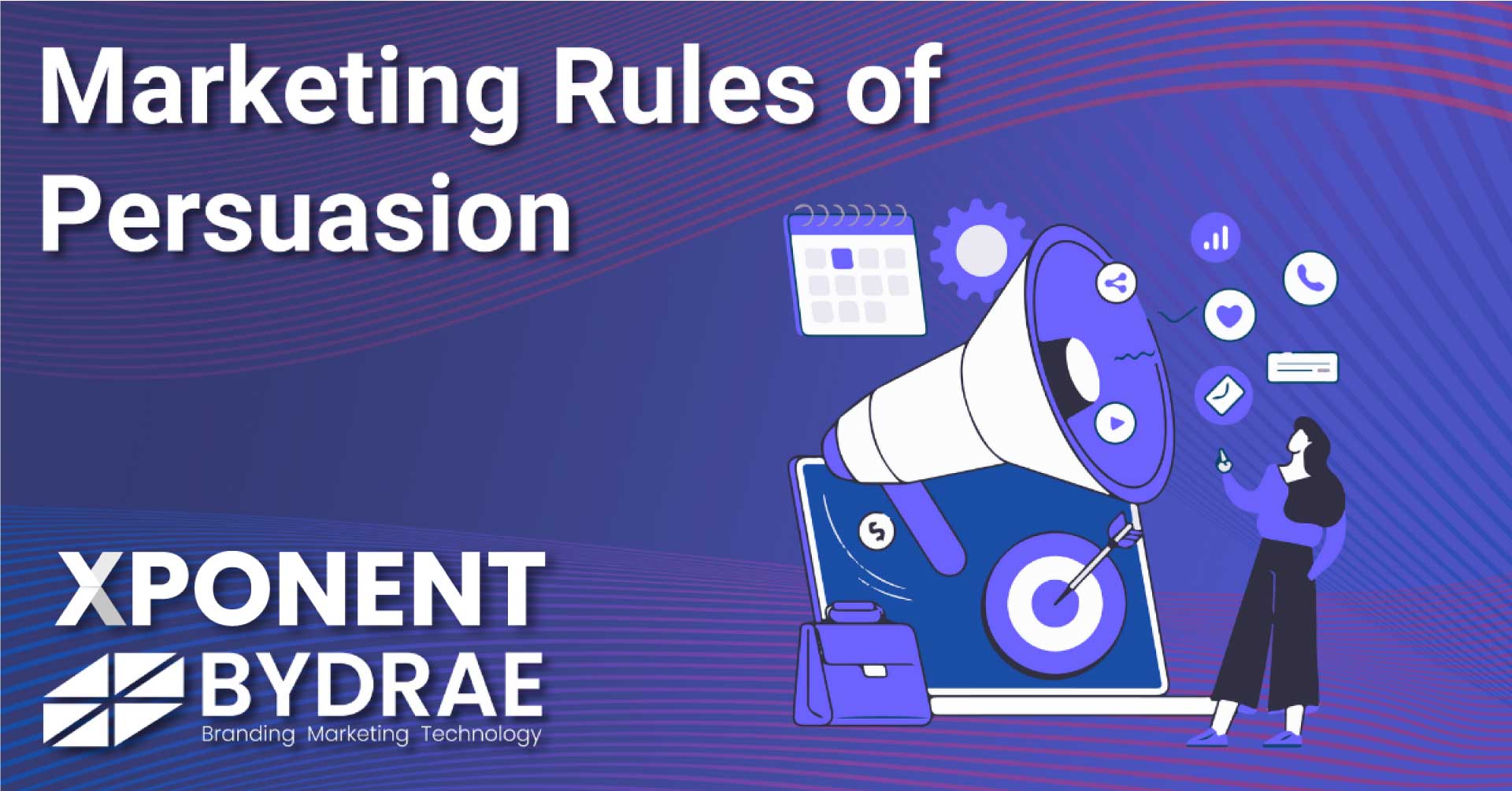Persuasive Marketing Advice for Your Business
Xponent has built a reputation for using resources creatively. Persuasive marketing and how we implement it at Xponent is no different. Despite many companies being entirely digitally transformed, we still rely on specific models and rules to keep content fresh and engaging that will ultimately lead to a sale. When people visit your website, the goal is to convince them to stay. To stay and to buy.
It is at the core of digital marketing to ensure how potential customers interact with a brand is how they want to interact with a brand. At Xponent, we use timeless and proven persuasive marketing methods to ensure your online marketing campaigns perform at their best.
From choosing the correct product descriptions and writing excellent blog posts to using visuals and a strong call to action – it all relies on applying human psychology to influence people and persuade them to make a sale with you.
The AIDA Marketing Strategy
The AIDA model was developed in the late 1800s by advertising guru E. St. Elmo Lewis. He created the model to assist salespeople in making successful sales. Today, we still use Lewis’ model to create compelling copy and visuals for websites that ultimately lead to sales.
The acronym stands for Attention, Interest, Desire and Action. Lewis’ model is implemented by marketing agencies who create entire marketing strategies built around the model.
The terms describe the four stages a consumer goes through before making a purchasing decision. Bydrae’s UX designer shares, “AIDA principles are especially relevant to the design of landing pages, where typically marketing and web design meet online. AIDA is a great way to structure how we think about the user experience and data points on our websites”.
The marketing strategy is a hierarchy of effects model, which means consumers, traditionally or in the digital realm, must move through each stage of the model to complete the desired action. Each step has fewer consumers than the previous one. Design elements and copy need to work together to communicate a specific message and lead a visitor towards a conversion point.
Any marketing campaign can benefit from using the AIDA model. This model, combined with a digital marketing team that can adapt and change as the trends do online, is beneficial to any company today.
Principles for Persuasive Marketing
Conversion rates matter. Getting to know your audience and using persuasive marketing strategies to get those conversions is what digital marketing is all about. Conversion rate optimisation (CRO) is the process of improving the probability of a visitor taking a desired action on your page.
In 1984, Dr Robert B. Cialdini wrote Influence: The Psychology of Persuasion. For almost three decades, marketers have used Cialdini’s six rules of persuasion in marketing. Again, the rules still apply for online marketers to get the conversions they need.
Getting customers to buy your products requires consistent, structured communication to persuade people to do so gradually.
Reciprocity: It’s human nature to feel like we have to return a favour once one is given. For example, you may offer site visitors a free training session or a free subscription to a valuable newsletter. This can encourage potential customers to buy from you in the future because they “owe you one”.
Consistency: We love consistency. Consistent communication shows potential customers that you are committed to them and their needs. Feeling like a customer eventually results in becoming one.
Consistency is our way of showing that we care about how we are perceived. Consistency also indicates that you can be relied upon to perform in a recognisable matter which means other people can formulate their plans and goals with you as a part of a greater picture they envision.
Social Proof: There is safety in numbers. Customers are more likely to trust a brand when they see others doing the same. Case studies have proven that we are hard-wired to do what others do.
Social proof is a psychological and social phenomenon where people copy the actions of others. This is the equivalent of “word-of-mouth” in the digital realm because the news or information comes from a verified source. It’s hard to fake social proof, so we trust it inherently.
Authority: Sometimes, you need to prove to your customers that you know what you are talking about. Incorporating professionals into your campaigns, like engineers, designers, or architects, gives customers a reason to trust you.
Showing certificates of compliance with quality management systems or industry awards positions you as an expert, which gives weight to your opinions and ultimately makes you more persuasive.
Liking: Customers need to connect with brands for there to be any chance of a conversion. When potential new customers visit your website, they should connect with you because they like what they see and read. It is a persuasion technique that draws similarities between the brand and site user to increase your brand’s chances of being liked.
Scarcity: It has become quite popular for large brands to create a sense of scarcity. Only releasing a certain amount of products or services can send customers into a frenzy to get their hands on what you are offering. A classic example was when Kylie Jenner released and sold out her first lip kit line (online) in 10 minutes.
Implementing Persuasive Marketing Strategies
The AIDA model and Cialdini’s principles have been used in marketing for decades to persuade customers to buy your product. Even though marketing has moved online, these principles are still in use and very effective.
Xponent offers the perfect combination of these timeless methodologies even while using the latest technology. We have custom-built strategies for our clients that work.
Reach out to a Xponent expert.





